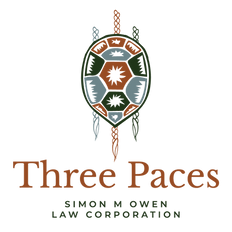The Map is Not the Territory
- organicfriend
- Dec 13, 2023
- 2 min read
Updated: Dec 13, 2023

At once obvious and intricate, this is one of my favourite sayings. As someone who spends so much time working with words, words which often assume the shape and force of laws, this phrase helps me orient between projections – hopes, fears, beliefs etc. – and realities. We need to be attuned to both, of course. But the former can too often obscure or uncouple from the latter.
On the page, laws are like maps. They are designs of what we want or need, directions for what we try to prevent or attain or restore. They may be useful, even beautiful. But blueprints are never the building. The map can never entirely measure, much less replace, the territory. That’s why resolutions to legal problems (what we might call justice) are rarely if ever done or discovered in the law itself, but only through its careful application to every case. Maps are general guides to unique destinations.
I’ve seen laws that neglect or even violently ignore the realities they pretend to honour. These maps torque the territory towards imagined ends: a desired perfection, a feared disorder. I’ve stood with confused and grieving families in courts that would not – could not – judge in ways that followed the true topographies of their pain or offer pathways towards their potential healing. On the map, their case was closed, successfully concluded. On the territory, they were lost and forgotten.
Many Elders reach for the word “natural” to describe the laws they’re living. My buzzy western word-bound brain has been challenged to understand this. We have filled even this word with theories, arguments, concepts and conclusions – Nature as God-given, Nature as apart – even opposite – from human laws. And, as these same Elders also know so well, laws can indeed be profoundly unnatural – forced upon Indigenous lands, people and circumstances in ways that impose an artificial order or solution. These laws may be powerful, but they are also shallow, shaky, invasive and unreliable.
But natural does not actually mean non-human. We are also natural! We live on and with the territory: interrelated, inextricable. I’m learning to understand natural more like consistent, concordant, in tune with things as they are. When one’s knowledge has matured in place over countless generations, the deep constancy of life – humans included – becomes more apparent. Good laws grow from this awareness. Good laws guide us back towards living well (in Anishinaabemowin: Mino-Bimaadizawin) within it.
Problems happen on the territory, of course: crises, tragedies, even the worst imaginable wrongs. But these good laws – these truest maps – deeply know, love and trust the territory. They are tools for finding, not forcing our way. The map is never the territory, but the territory can – with enough care, humility and wisdom – be quite naturally mapped.

Comentários